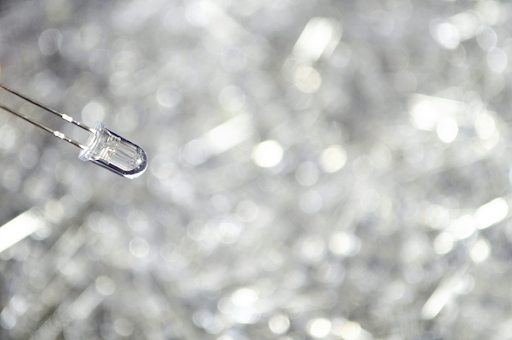
Supercapacitors (ultracapacitors) are now center stage for designers of electronics and particularly power circuits. This is because they are improving faster than the batteries and electrolytic capacitors they increasingly replace. More subtly, they reduce the need for and danger from lithium-ion batteries. For example, when placed across a rechargeable battery, they protect it from fast charging and discharging and allow more of the energy in the battery to be utilised. The result is that less battery is needed, life and safety are improved and maintenance is reduced. As a result of this and the increasing use of supercapacitors where they do not replace batteries, the growth of the leading suppliers in aggregate has increased from 25% yearly to a blistering 30% yearly rising to over $11 billion within ten years.
Of the eighty or so companies making or about to make supercapacitors and their variants such as supercabatteries (“assymetrical electrochemical double layer capacitors” such as “lithium capacitors”), only 6% are in Europe. It may therefore seem to be a strange location for the Supercapacitors Europe 2013 (www.IDTechEx.com/supercapsEU) event. However, 25% of supercapacitor demand is in Europe, from Bombardier using large banks of them to recapture braking energy of trains to Riversimple putting them across the fuel cell in a car and extensive use by others as backup in wind turbine blade control, bus door opening, hybrid car, crane and elevator braking and many stand-by power supplies for electronics. The MAN hybrid bus in Germany is a success with the lithium-ion battery completely replaced by a supercapacitor.
Mainly, these large and rapidly growing applications in Europe leverage the high power density and above all fit-and-forget benefits of supercapacitors which last the life of the equipment in which they are installed. With the Boeing Dreamliner grounded because of its lithium-ion battery system, in future supercapacitors will partly or wholly replace such batteries in aircraft wherever possible, mimicking what has already happened on the ground. Indeed, supercapacitors can be fully discharged for transport and the majority of them will soon have no flammable toxic electrolyte unlike the batteries they replace. By contrast, air regulations concerning transport and use of lithium-ion batteries may tighten.
Supercapacitors Europe 2013 (www.IDTechEx.com/supercapsEU) forming part of IDTechEx’s premier technology events is alongside many very relevant sessions such as ones on graphene which may permit supercapacitors to exceed the energy density of even lithium-ion batteries. Why then would anyone want to buy the batteries other than on price? Other co-located events concern the printed electronics and energy harvesting that is used respectively to improve the price and performance of supercapacitors and to interface them with systems enjoying considerable market growth. There is even the prospect of thin film supercapacitors over a car or on the back of flexible solar photovoltaics. Others in Europe work on structural, load bearing supercapacitors, part of the trend to integrate components and make them vanish.
The event presents the huge effort in Europe to leapfrog existing supercapacitor technology and its applications. It emerges that the west coast Normandy region of France is becoming a center of excellence in Supercapacitors. There, companies such as Armor Group, Batscap and its parent company Bollore and the Hutchinson Group, subsidiary of the TOTAL energy group, are interesting examples of an emerging supercapacitor technology cluster in the region, among them you find technological capabilities for different key stages of the supercapacitor value chain, from key supercapacitor components manufacturing to the supercapacitor equipped electric vehicle BlueCar.
IDTechEx’s Supercapacitor events are becoming the main show on graphene and carbon nanotubes applications in supercapacitors. In our previous event in the USA, we had speakers on carbon nanotubes in supercapacitors from academics such as Hang Yang University in Korea and State University of New York at Binghamton, companies presenting their advances in implementing graphene and carbon nanotubes in supercapacitors such as Nanocomp and Extreme Capacitors.
This time as the conference is based in Berlin, German progress will be represented by Fraunhofer IPA who is leading the Electrograph European project focused on production of graphene through electrochemical exfoliation for Supercapacitors and Max Planck Institute for Polymer Research, speaking about hierarchical Graphene-Based Materials for High-performance Supercapacitors.
On behalf of the UK, the University of Manchester, part of the British consortia focused on the “manufacturability” of graphene, will talk of topics such as porous graphene for flexible supercapacitors and VTT in Finland on supercapacitors versions with aqueous electrolytes printed on paperboard. LAAS-CNRS from France, will present the use of supercapacitors Battery-free Wireless Sensor Networks Deployed in Airliners in aircraft. Companies such as Graphene Frontiers will speak about their chemical vapour deposition process for implementation of graphene/nanotube to electrode materials. Imperial College will cover smart skin supercapacitors.
Indeed we are delighted to have all these prominent institutions in just one place. In addition by collocating our events Graphene Live! www.idtechex.com/graphene and Supercapacitors Europe 2013, www.idtechex.com/supercapseu there is no other event this year in which you will find out how graphene research is advancing and its potential markets including the perspectives of scale manufacturability through energy applications such as Supercapacitors.
Importantly Supercapacitors in Berlin adds a global dimension too with best-in-class speakers from Asia to America including leader CAP-XX from Australia, Graphene Frontiers from the USA and Shanghai Shi Long High-Tech of China, Elbit Systems from Israel and HEL Ltd from the UK. These speakers will detail how why and what next, notably in replacing batteries and analysts IDTechEx present the latest ten year forecasts. No other event has such a comprehensive coverage of the component that is changing the world, the supercapacitor, including its technologies from carbon nanotubes to graphene in this session, and its progress in using new automation, printing test equipment in its manufacture.














More Stories
LED Lighting for Heavy-Duty Applications: Durability, Efficiency, and Versatility
Celanese Materials Shine in Multiple Category Winners at 2024 SPE Automotive Innovation Awards
New future-ready single-slot PXIe controller for high-performance T&M applications from Pickering Interfaces